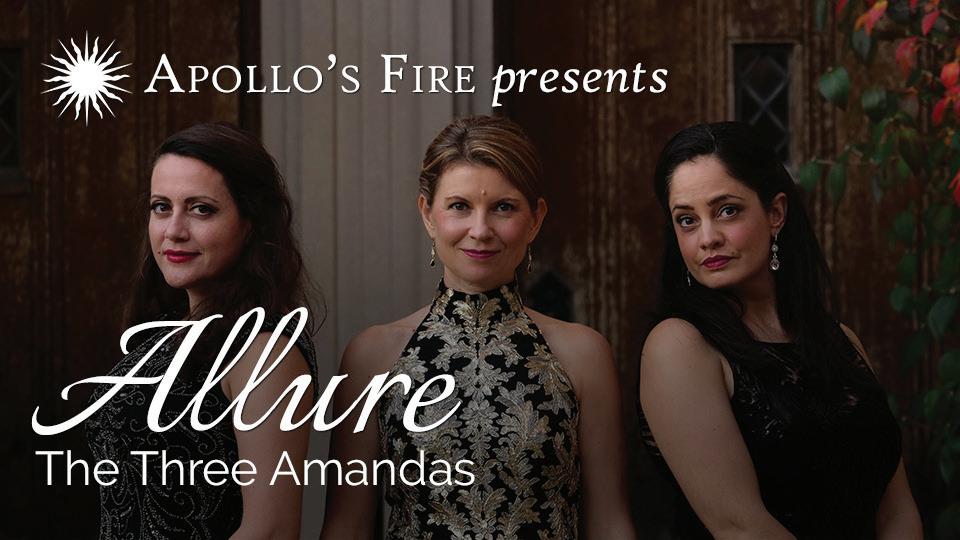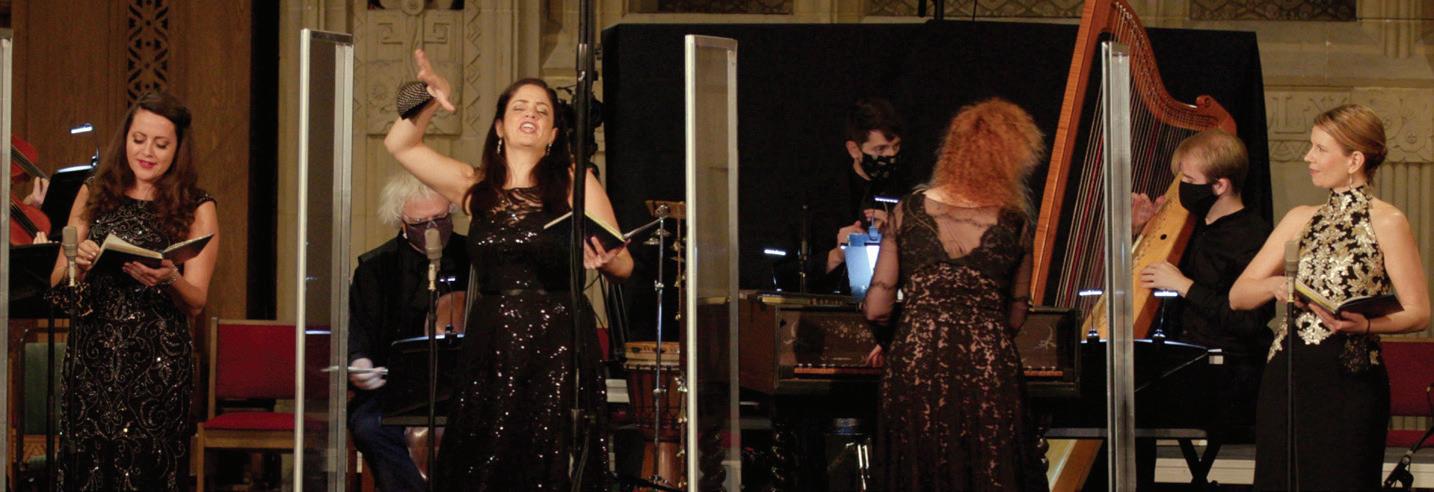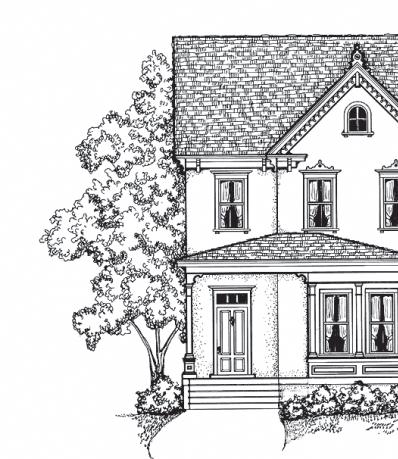
13 minute read
Notes on the Program
BACH’S VIRTUOSO MUSICIANS
A Young Prince, a Young Composer, and Some Laid-off Musicians Make Musical History Together
Advertisement
by Jeannette Sorrell
In 1713, a new Prussian king took the reins in Berlin. King (or “Elector”) Frederick William I was a serious and thoughtful leader. Unlike his father, he did not want to treat the royal treasury as his personal source of wealth. He was interested in making his small country better and stronger. He wanted to establish schools and hospitals. So he quickly sold off most of of his father’s horses, jewels, and furniture, in order to use the money for the public good. What most history books don’t mention is Frederick William I of Prussia that this bout of royal budget-cutting by the new king included what we would call Arts and Entertainment. He got rid of the palace orchestra. And so it was that about fifteen of Europe’s finest musicians – the leading virtuoso instrumentalists of Germany – found themselves without jobs. Laid off, as we would say. What would they do? Fortunately, in the small community of Köthen, a young prince named Leopold was just about to turn 21 and was beginning to set up his palace. He loved the arts and wanted to establish a small orchestra. So he sent word to Berlin that 8-10 of the departing musicians were welcome at Köthen. And they came. Three years later, the Prince recruited his conductor-composer of choice, a young and moody Saxon organist named Johann Sebastian Bach. And then the party got rolling. Bach’s six years with the excellent Köthen palace Prince Leopold von Köthen musicians (1717-1723) were an outpouring of

virtuoso compositions for small orchestra. The works that Bach wrote for his little Köthen band have become among the most beloved pieces in the world – the Brandenburg Concertos, the orchestral suites, and the violin concertos – as well as the sonatas and partitas for unaccompanied violin, the suites for solo cello, etc. Today, the town of Köthen still celebrates its heritage as the birthplace of these masterpieces of Bach. One of the first requests Bach made to his young boss was for an outstanding harpsichord. So an Johann Sebastian Bach order was placed with a harpsichord-maker in Berlin. In 1719, Bach traveled to Berlin to pick up the beautiful instrument. At that time, he played for Christian Ludwig, the Margrave of Brandenburg. This Margrave was the younger brother of King Frederick William I, the former boss of Bach’s musicians (who as you recall was now busy building schools and hospitals). The Margrave commissioned Bach to write some music for him. Two years later – yes, Bach took his time – the composer sent a beautifully bound manuscript to the Margrave in Berlin. The manuscript contained the six magnificent pieces which Bach called Six Concerts avec plusieurs d’instruments. We know them as the Brandenburg Concertos. But Bach had actually composed these pieces for his own band at Köthen; those Köthen virtuosi – the migrants who had been laid off in Berlin – are the musicians who inspired these amazing pieces that we love. Bach’s variety of instrumentations in the The Margrave of Brandenburg Brandenburgs is unique and daring. Brandenburg Concerto no. 3 is an exuberant celebration of democracy in music, scored for ten solo string players. Bach composed two substantial movements for this concerto, leaving the players to improvise a transitional second movement, for which he provided only two chords. Designed to showcase the star musicians of the Köthen orchestra, the piece remains a thrilling workout for any ensemble today. It also uses both texture and form in unprecedented ways, blending the solo concerto and group concerto (concerto grosso) forms. The contrapuntal complexity (far exceeding the concertos of Vivaldi) is one of the qualities that makes us feel we hear

something new and different each time we listen. Above all, there is a sense of exhilaration that all of us feel from performing it. Some of that is due to sheer virtuosity, which is at an athletic level.
The pieces that we call the Orchestral Suites were labeled by Bach as “Ouvertures.” All of them are French-inspired suites consisting of a virtuosic overture in French style, followed by a series of dance movements. We perform two selections from Orchestral Suite no. 3. The beloved and poignant Air is justly famous (known in modern times as “Air on the G String,” though Bach would have never played it on the G string, and neither do we). This air is a profound example of Bach’s extraordinary ability to move the emotions through music. The Gigue is a virtuoso romp that keeps all parties on their toes.

Bach’s Brandenburg Concerto No. 3
The Case of the Missing Music
After Bach’s death, many of his manuscripts were left to his eldest son, Wilhelm Friedemann. Unfortunately Wilhelm was a ne’er-do-well who had trouble holding a post. He sold off his father’s manuscripts one by one, to random people, whenever he needed cash. And thus they disappeared. One of the many missing manuscripts is that of the Violin Concerto in D minor. If the manuscript is missing, you ask, how do we know that it ever existed? Well, we look at the clues. At Zimmermann’s Coffeehouse in Leipzig, Bach performed
many harpsichord concertos with his student orchestra. He had arrived in Leipzig with no harpsichord concertos, and had no time to compose new music for the coffeehouse orchestra. So he arranged older violin and oboe concertos that he had previously composed, and converted them into harpsichord concertos. Some of these pieces survive in both versions, enabling us to look at the subtle changes that Bach made to transcribe the piece from one instrument to another. In other cases, only the harpsichord version survives – the original violin or oboe version having been sold off by the aforementioned Wilhelm Friedemann. By studying the adaptations that Bach made in the pieces with surviving models, it is possible to deduce which instruments were originally intended for the pieces without surviving models. For example, in the Harpsichord Concerto in D Minor, BWV 1052, there are two extensive passages using the “bariolage” effect – a violin technique in which moving notes are rapidly alternated with repeated notes, (the repeated note being an open string on the violin.) Bariolage can be reproduced on the harpsichord, but it is much more naturally idiomatic to the violin. They key of D Minor was often used by 18th-century composers (including Mozart) for bold, dramatic concertos. Bach’s D Minor Concerto lives up to that expectation with fierce intensity. The outer movements require unflagging concentration and nerve from the soloist. The middle movement is a haunting and poetic Adagio, full of rhetorical and dramatic moments. Several scholars have created reconstructions of the lost D Minor Violin Concerto. Alan Choo has made his own adaptation, based on studying the surviving harpsichord concerto.
Shout for Joy!
Bach composed his joyous Jauchzet Gott in allen Landen (“Shout for joy to God in all lands”) in Leipzig in the late 1720s. This is his only church cantata scored for a solo soprano and trumpet. He composed it for general use, not for a particular date in the church calendar. The first known performance was in 1730 in Leipzig. The joyful text draws from several books of the Bible, especially the Psalms. Bach structured the music in five movements. In the extroverted outer movements, the soprano is accompanied by a virtuoso trumpet, strings and continuo. By contrast, the central introspective aria, accompanied only by the continuo, conveys a mystical and timeless atmosphere of faith. The Bach scholar Klaus Hofmann notes that this cantata is unique in the demanded virtuosity of the soprano and trumpet soloist. It blossoms with “overflowing jubilation and radiant beauty.”
RAVE REVIEWS for AF’s new Worldwide Watch-at-Home Series

– SEEN & HEARD INTERNATIONAL (UK)
In the words of Civil War heroine Harriet Tubman, “Every dream begins with a dreamer.” The new RESILIENCE program from Jeannette Sorrell weaves dreams, struggles, music, and poetry into a poignant and ultimately uplifting journey.

“Apollo’s Fire is a cultural treasure, particularly in its willingness to grapple with the world’s problems and offer comfort and catharsis. They proved once again that they are the embodiment of the program’s title: resilience.” – Seen & Heard International (UK)
“The season opener by Apollo’s Fire is about as timely as can be... drawing poignant parallels to today. No one else... gives Dowland and Purcell such suave, dramatic treatment. Soprano Ashlee Foreman delivers a tour de force in ‘Death Comes to My House’ and the whole group carries ‘Wade
in the Water’ to captivating heights. The takeaway is a message of hope, a celebration of humanity’s ability to endure.” – Cleveland.com
“Brilliant performances that illuminated two troubled periods in history... The emotional content of the music rang true. Sensitive videography and close-up camera work gave the viewer access to more than a front row seat.” – ClevelandClassical.com

WHAT THE AUDIENCE IS SAYING
“Wow. Just wow. We watched ‘Resilience’ last night and, for the first time, current events finally took their place in a historical context that makes sense. Between the well chosen and presented readings and the glorious music, a space opened up in my mind to let the spirit in. I was glad that I was in my own living room because I cried and cried — in a good, cathartic way.” – Nancy in Cincinnati, OH “That was the most moving Apollo’s Fire concert I have seen and I’ve gone to many over the years. And when they did the last song, ‘We Shall Overcome’, I burst into tears. The entire program was beautiful.” – Barbara in Willoughby, OH “Deeply moving! Thank you for this gift of grace, beauty, and hope. Indeed, we shall overcome, someday.” – Sandy in Akron, OH “What a magnificent gift this concert is! Acknowledging the losses, the tragedies of this time, and yet rekindling hope in a dark time. Such beauty from so many perspectives, and such musicianship!” – John in Albany, NY


“Apollo’s Fire finds sizzling Allure in the early baroque… the concert unfolds with plenty of magic... a lone violinist rises from his seat in the audience, casting a spellbinding atmosphere as the whole
ensemble comes to life...” – SEEN & HEARD INTERNATIONAL (UK)
“The opening piece rather startlingly allies a catchy, danceable melody with grim lyrics about the necessity of enjoying life because of the looming inevitability of death, something on everyone’s mind as the Covid-19 pandemic spirals to new heights. Leave it to Sorrell to find a piece of music within the stylistic frame of a historical program that also happens to directly address current events.” – Seen & Heard International (UK)
“Stunning... Forsythe, Powell and Crider deliver the kind of jaw-dropping performances that might well have landed them jobs at the 17th-century Ducal court. A typically effervescent Apollo’s Fire finale…” – ClevelandClassical.com

WHAT THE AUDIENCE IS SAYING
“ALLURE is magnificent. The program is total joy, as is Professor Kelly’s pre-concert talk. Both are true gems, what an achievement.” – Ann in Cleveland
“I have played your performance over and again, such is my delight and enjoyment of your interpretation and the extraordinary ability of all the players... gorgeously elegant. I migliori auguri e felicità, – William in Italy
“The quality of the audio and the video are unequaled in our other watching. Of course, the quality of the playing is just as wonderful. We are so grateful to be able to see and hear the entire season this year.” – Susan in North Carolina
“One of the silver linings to the pandemic is the possibility of enjoying AF remotely, and it has been wonderful. The concerts have been exceptional - the music, the production quality, and the preconcert lectures.” – Jonathan in Chicago
“Absolutely gorgeous! Loved it. Really miss being there in person, but the videos are such high quality, we almost feel we were there.” – Mary & Fred in Oberlin
“I’d like to say thank you to Jeannette Sorrell and her ensemble. Listening to her music raises my spirits and makes me feel happy :-) in these dullen times.” – Albert in Germany
“We LOVE the online experience. Love the fact that we don’t have to drive to a venue, love that we can take breaks and view the concert many times. In fact, we love it so much we hope you will continue to offer a video option.” – Pamela in Cleveland




– SEEN & HEARD INTERNATIONAL (UK)
“Apollo’s Fire moves seamlessly from Baroque art music to Irish folk tunes. The harp was ‘masterfully played’ by Anna O'Connell. She's also an accomplished singer. Jeannette Sorrell is a seasoned veteran at building programs with a narrative thread... This finely engineered video by Erica Brenner should become a historic document....” – ClevelandClassical.com

WHAT THE AUDIENCE IS SAYING
“Another wonderful concert that I just listened to for the first time and look forward to hearing it again... well worth every penny.” –Pam in Seven Hills, OH
“I've revisited this concert weekly since it's release. Each time is a new and wonderful experience. This is like a visit with an old friend....beautiful music. Thank you!” –Marilyn in Hudson, OH

“Apollo’s Fire brings the inspiration of Jewish culture in the Italian Baroque to Cleveland... One of the many strengths of Apollo’s Fire is its intellectual restlessness... Sorrell has cultivated audience curiosity over the years. As a result, the audience will fearlessly follow wherever the ensemble goes. Salamone Rossi's music... takes on great life when performed with strong advocacy, and Apollo’s Fire gave it wings. Monteverdi was performed with emotion and exquisite control by Jacob Perry and Ashlee Forman. Benedetto Marcello's... Psalm 15 gloriously contrasted countertenor Daniel Moody’s arching phrases with Rene Schiffer’s darkly expressive playing of the violoncello piccolo. This yielded to a richly rabbinical presentation of the traditional Psalm chant by Strauss. Sammartini’s Recorder Concerto was dancingly played by Daphna Mor. It is stunning to hear the virtuoso musicality Mor can extract from the instrument, particularly when backed by an ensemble sensitive to her every inflection. The video gives a sense of how closely the players and director have to bond to follow this work’s twists and turns. A concert of fascinating explorations...” – Seen & Heard International (UK)







